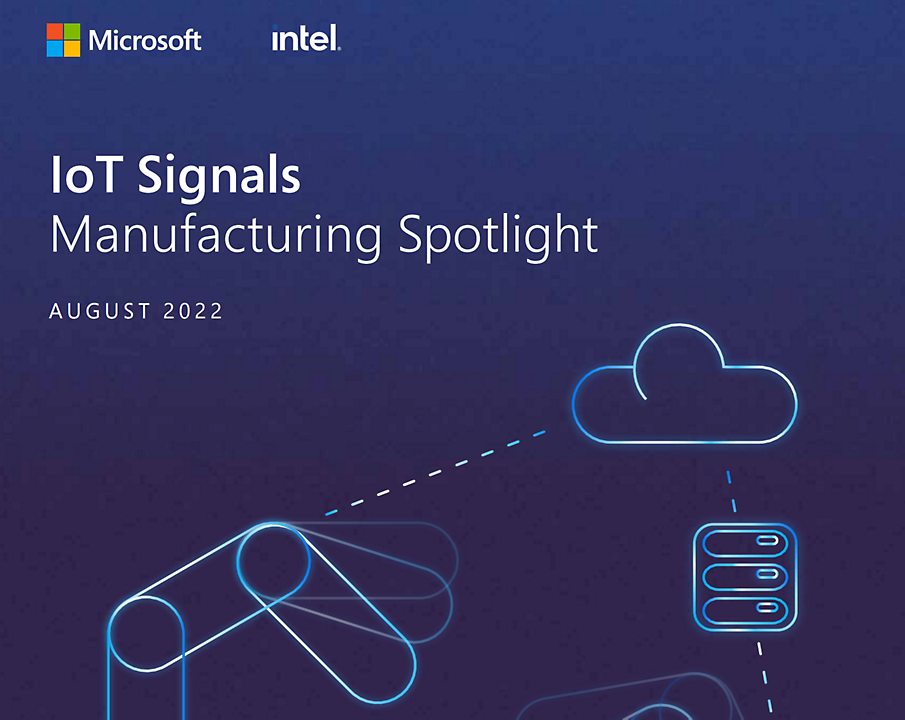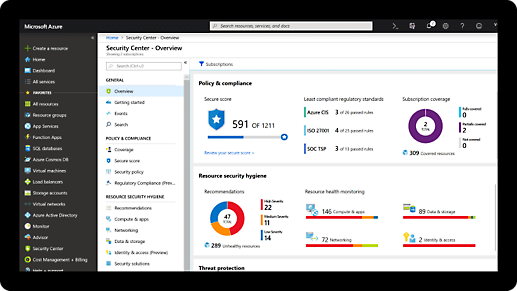Azure IoT Edge
Build the intelligent edge.
Cloud intelligence deployed locally on IoT edge devices
Deploy Azure IoT Edge on premises to break up data silos and consolidate operational data at scale in the Azure Cloud. Remotely and securely deploy and manage cloud-native workloads—such as AI, Azure services, or your own business logic—to run directly on your IoT devices. Optimize cloud spend and enable your devices to react faster to local changes and operate reliably even in extended offline periods.

Runtime: Free and open-source under the MIT license to give you more control and code flexibility
Modules: Docker-compatible containers from Azure services or Microsoft partners to run your business logic at the edge
Simplify development
Use existing developer skillsets and code in a language you know. IoT Edge code is consistent across the cloud and the edge, and it supports languages such as C, C#, Java, Node.js, and Python.
Remotely monitor devices at scale
Remotely monitor IoT Edge devices at scale with Azure Monitor integration. Use built-in metrics and curated visualizations to gain deep visibility into the health and performance of your edge applications right in the Azure portal. Combine on-demand device logs with IoT Edge for best-in-class edge observability.
Reduce IoT solution costs
Only a small fraction of IoT edge data acquired is meaningful post-analytics. Use services such as Azure Stream Analytics or cloud-trained machine learning models to process the data locally and send only what’s needed to the cloud for further analysis. This reduces the cost associated with sending all your data to the cloud while maintaining high data quality.
Operate offline or with intermittent connectivity
Operate your edge devices reliably and securely, even when they’re offline or they have intermittent connectivity to the cloud. Azure IoT Edge device management automatically syncs the latest state of your devices after they’re reconnected to ensure seamless operability.

Read the latest edition of the IoT Signals report
This paper builds on the success of prior reports, uncovering fresh learnings and insights on the state of IoT.
Comprehensive security and compliance, built in
-
Microsoft invests more than USD1 billion annually on cybersecurity research and development.

-
We employ more than 3,500 security experts who are dedicated to data security and privacy.

-
IoT Edge pricing
IoT Edge consists of the edge runtime, edge modules, and a cloud interface via Azure IoT Hub. The IoT Edge runtime is open source and free.
Get started with an Azure free account
1

2

After your credit, move to pay as you go to keep building with the same free services. Pay only if you use more than your free monthly amounts.
3

Trusted by companies across industries
Documentation, resources, and learning tools
MS Learn
Whether you're new to IoT or an experienced developer, IoT School offers role-based learning materials and resources to plan and build your IoT solutions.
IoT Show
See the latest IoT Edge features, demos, customer and partner spotlights, industry talks, and technical analysis.
IoT tech community
Ask questions and get support from Microsoft engineers and Azure community experts.
Documentation
Create the intelligent edge with the help of 5-minute quickstarts, how-to guides, tutorials, and sample code.
Frequently asked questions about Azure IoT Edge
-
IoT Edge has three components. IoT Edge modules are containers that run Azure services, third-party services, or custom code. They are deployed to IoT Edge-enabled devices and execute locally on those devices. The IoT Edge runtime runs on each IoT Edge-enabled device and manages the modules deployed to each device. The cloud-based interface remotely monitors and manages IoT Edge-enabled devices.
-
IoT Edge also offers:
- Zero-touch provisioning of edge devices.
- Security manager with support for hardware-based root of trust.
- Extended offline operation.
- Integration with Azure Monitor for best-in-class observability.
- Automatic Device Configuration Service for scaled deployment and configuration of edge devices.
- Support for SDKs in C, C#, Node, Python, and Java.
- Tooling for module development, including coding, testing, debugging, and deployment.
- CI/CD pipeline using Azure DevOps.
-
IoT Edge is among the most open edge platforms available today, and Microsoft is committed to using open-source technologies to deliver innovations at the edge. The IoT Edge runtime is open-sourced under the MIT license to give you more control and flexibility with the code. IoT Edge supports the Moby container management system, which extends the concepts of containerization, isolation, and management from the cloud to devices at the edge.


